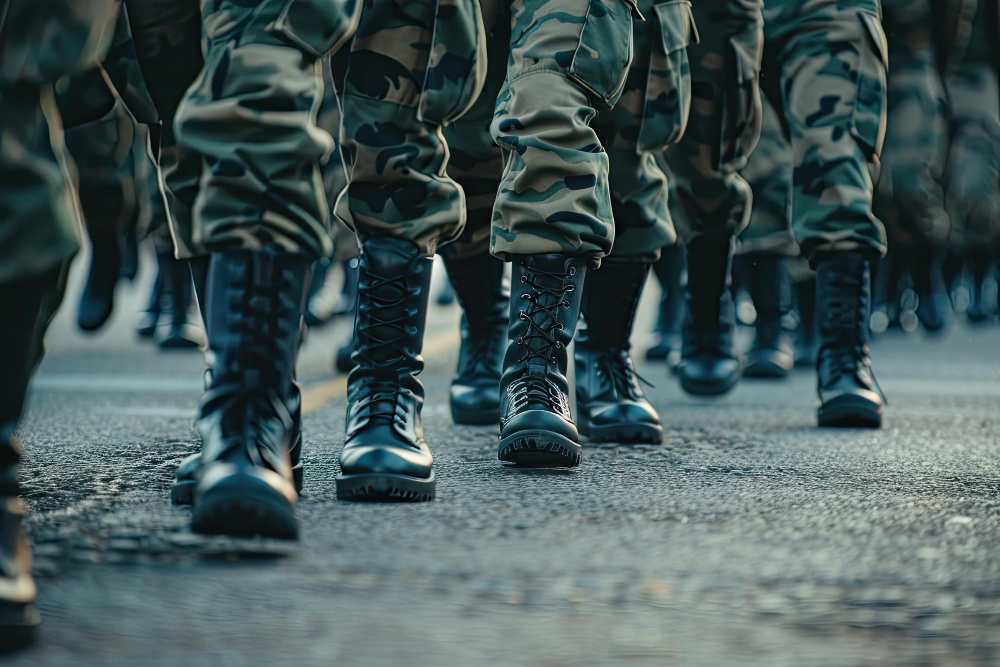Summary
- Russia’s war on Ukraine has revealed the sorry state of European militaries and defence industries after decades of peace dividends, as well as their deep reliance on the US.
- A second Trump presidency could drastically reduce US defence support for Europe. But regardless of the outcome of the US presidential election, the degradation of the European security environment and the shifting priorities of the US mean that Europe needs to be prepared to take more responsibility for its own defence.
- Europeans require a sustained plan over the next decade that combines immediate efforts to support Ukraine and rebuild readiness, and longer-term goals to develop a “full force package”, including the combat support capabilities and key enablers that are currently provided primarily by the US.
- Paradoxically, such a deliberate approach to overcoming institutional challenges and strengthening Europe’s defence capabilities may be the best way to preserve a strong transatlantic relationship and a degree of US commitment.
European defence policies are facing their most important stress test since the early days of the cold war. Russia’s full-scale invasion of Ukraine brought war back to the heart of Europe and revealed just how reliant Europeans were on the United States for their defence. This forced Europeans to review their defence requirements, including the collective defence of the continent, and address the sorry state of their current plans. If re-elected as US president this autumn, Donald Trump has suggested that he will drastically reduce or remove US military support for Europe. But even setting aside the goal of “Trump-proofing” Europe, competing US priorities and polarised domestic debates, as well as Europe’s deteriorating security environment, mean that Europeans urgently need to strengthen their ability to defend the continent with less input from the US.
At first sight, Europe has the means to defend itself. European NATO allies and EU member states together outspent Russia four to one on defence in 2023; their combined military forces are larger than those of Russia or the US; and European defence industries produce some of the most advanced weapons systems around, with six European countries among the top ten global arms exporters. Last but not least, Europe’s GDP is ten times larger than that of Russia, second only to the US.
Yet after decades of “peace dividends” and free-riding, with the US military leading on the most demanding scenarios in Europe and providing the key capabilities, the atrophy of European military forces and defence industries over decades has made their assistance to Ukraine complicated and slow. Rebuilding European militaries now looks highly challenging.
NATO’s defence planning process and parallel EU processes have identified the shortfalls of European defence, but Europe needs to overcome several challenges in order to address them. European countries need a robust plan, sustained over a decade, to strengthen their ability to defend Europe with less America.
Europe’s declining security environment
Russia’s full-scale invasion of Ukraine in 2022 served as a wake-up call to many Europeans. But Europe’s security environment had in fact been deteriorating for far longer. Europe’s relationship with Russia had been on the decline since 2007, when Vladimir Putin gave his famous speech at the Munich Security Conference, in which he accused the US of creating a “pernicious” unipolar world with “one master, one sovereign” which was of no interest to Russia. After the US and the European Union had worked to include Russia in the post-cold war security system, Putin was calling for a system rethink. What followed was proof of these intentions: Russia’s invasion of Georgia in 2008; its illegal annexation of Crimea and beginning of the protracted conflict in the Donbas in 2014; its steady withdrawal from the arms control and security architecture that had been built since the 1970s; and then its full-scale invasion of Ukraine.
Whatever the outcome of the war on Ukraine, it is therefore reasonable to assume that relations between Russia and the West will remain confrontational for the foreseeable future, whether eventually in a new cold-war mode, or with more crises or conflicts to come. Most military and defence leaders predict that within years of the end of the war in Ukraine, Russia will have reconstituted a sufficiently solid military to be able to test the resolve, cohesiveness, and ability of European defence anew. Germany’s defence minister, Boris Pistorius, has warned that “Germany must be ready for war by 2029” as “we must not believe that Putin will stop at Ukraine’s border”. The chairman of NATO’s military committee, Admiral Rob Bauer, also noted in a recent speech at the US Army War College that “we should not underestimate [Russia’s] ability to rebuild and regroup”. The European public feels this threat too: in ECFR’s latest polling in Ukraine and 14 other European countries, significant numbers of respondents said they believe it is either “rather likely” or “very likely” that Russia attacks another European country within the next two years, ranging from 21 per cent in Bulgaria to 54 per cent in Portugal.
Beyond Russia, Europe’s broader security environment is also looking increasingly unfavourable, with multiple other crises in Europe’s neighbourhood from the Sahel to the Middle East, and the development of great power competition, including with a strong hard power dimension. Europe’s traditional cooperative approach to international affairs appears unprepared for this environment. Its longstanding excessive reliance on the US for security is an additional weakness.
About the author:
Camille Grand is a Distinguished Policy Fellow at the European Council on Foreign Relations. He leads the organisation’s work on defence and disruptive technologies in European security.


